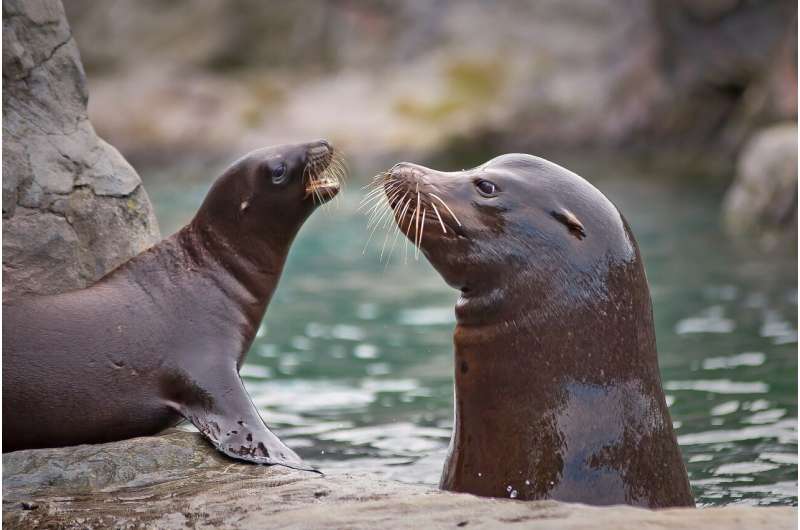Newly Discovered Herpesvirus Found in South American Seals

March 6, 2024
In compliance with Science X's editorial procedures and standards, this article has undergone a rigorous vetting process, including:
- Fact-checking
- Proofreading
Review and endorsement by Shedd Aquarium
A breakthrough study published in PLOS ONE illuminates a pivotal finding relating to the health of maritime mammals. It demonstrates the first-ever detection of Otariid gammaherpesvirus 1 (OtGHV1) in South American pinnipeds living freely, along with an unidentified herpesvirus, Otariid gammaherpesvirus 8 (OtGHV8), found in South American sea lions (Otaria byronia) in the Southern Hemisphere.
The research significantly contributes to our awareness of the distribution and diversity of such viruses among pinnipeds, underscoring the necessity for further examination of the impact of these emergent, infectious pathogens on wildlife health and how they can impact dynamics within marine and analogous aquatic ecosystems. A team comprising of Veterinarians and researchers from Brookfield Zoo Chicago, Programa Punta San Juan, Shedd Aquarium, University of Illinois Wildlife Epidemiology Lab, University of Florida, local partners, among others, conducted the study in Punta San Juan, Peru.
Pinniped populations in the South Pacific have been meagerly studied. Because of this, the opportunity to sample these creatures in Peru presented the researchers with a chance to uncover and characterize the epidemiology of herpesviruses in the region. OtGHV1 has been extensively reported in California sea lions (Zalophus californianus) in the Northern Hemisphere, being associated with high rates of urogenital cancer.
Despite the geographic reconciliation of northern fur seals and the California sea lions and extensive surveillance, neither the virus nor cancer has been pinpointed yet. Advanced testing methods enabled the researchers to detect not only OtGHV1 but also identified a hitherto unknown herpesvirus, OtGHV8, in wild pinnipeds in the Southern Hemisphere.
This breakthrough significantly enhances our knowledge regarding herpesvirus diversity and distribution in marine mammals. Moreover, the discovery of OtGHV8 underlines the intricacy of viral ecology in pinniped clusters. 'It steers us towards intensified investigation into the animals' health,' says Dr. Matt Allender, a co-author of the study and director of the University of Illinois Wildlife Epidemiology Laboratory.
The findings suggest that given the different phylogenetic relations between the viruses and their variable interactions with their hosts, South American fur seals (Arctocephalus australis) could potentially be the original host for OtGHV1, particularly given that there's no evidence of urogenital cancer in wild populations in Peru.
Generally, herpesviruses cause minor clinical disease in their host species, but can result in severe disease in aberrant hosts. The complex interplay between the host, environment, and evolutionary pressures on herpesviruses necessitates further investigation in this population.
Both the South American sea lions and the fur seals, considered endangered by the Peruvian government, are guarded in the Punta San Juan marine protected area, which serves as a critical breeding site for these species. These populations have seen declines due to hunting, habitat encroachment, overfishing, and pollution.
'Our goal is to identify pathogen threats and understand their potential crossover and differentiate their interactions to strengthen our intervention responses and minimize disease impacts on these pinnipeds populations,' says Dr. Karisa Tang, a co-author on the study and the VP of animal health at Shedd Aquarium.
Health assessments of these species or ecosystems can provide valuable data for future conservation measures and describe how the changing environment correlates with shifting disease patterns.
Through the study, the Illinois Zoological and Aquatic Animal Residency (IZAAR) Program offers training to aspiring zoo and aquarium clinical medicine specialists. Dr. Tang, who participated in the study and also used it as her master's thesis, is a product of the residency program.
Provided by Shedd Aquarium




